Six projects named to Prix Versailles list of World's Most Beautiful Campuses for 2024
By Josh Niland|
Tuesday, Oct 1, 2024

Related
The Prix Versailles selection of the 2024 World's Most Beautiful Campuses has been announced as a group of six new or renovated academic buildings that represent the very best in campus architecture and design for higher education.
Each evinces a blend of creativity, ecological concern, and a deference to local heritage. Perhaps the most significant of the group is the new Gaia project for Nanyang Technological University in Singapore from Toyo Ito, which is the largest mass timber building in Asia. They will next compete against the other category winners for the three available 2024 World Titles (Prix Versailles, Interior and Exterior) whose laureates will be announced at UNESCO Headquarters on December 2nd.
The prize's Secretary General, Jérôme Gouadain, says of the group: "These places that serve to educate people, places where knowledge is shared and learnt, are crucial to the development of a sustainable society where sensitivity and intelligence go hand in hand. Beauty in the form of architectural excellence on campuses helps to spur the learning process. It contributes to the well-being of students and instructors alike, and represents an undeniable mark of trust and an invitation to shine."
Gaia, Nanyang Technological University, Singapore by Toyo Ito
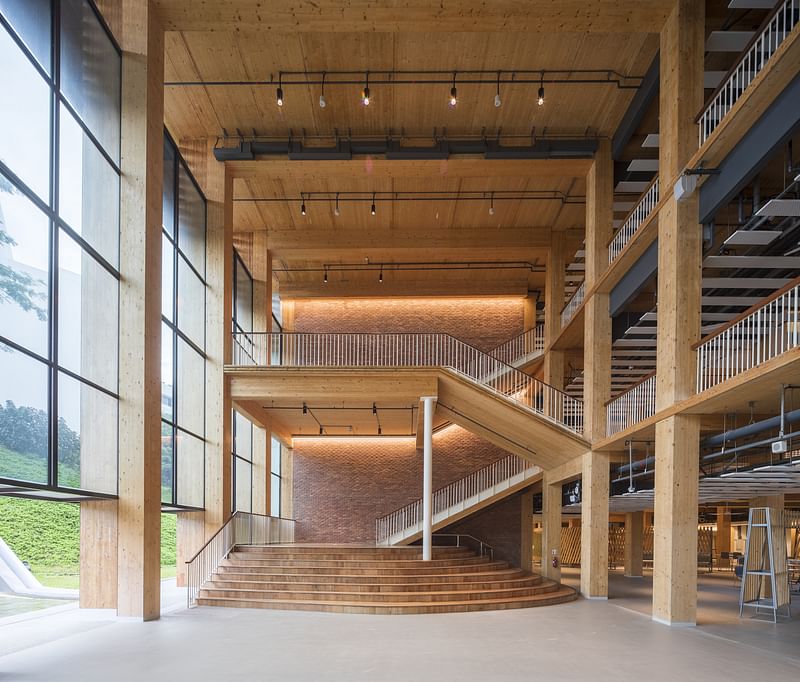

Project description: "The use of solid wood as a building material comes with its own constraints. In spite of these, Singapore – the garden city with bold architecture – and Nanyang Technological University gave rise to Gaia, the largest woo- den building in all of Asia and an educational space for learning, research and innovation. The structure is worthy of its namesake Gaia, the Greek goddess of the earth. The firms Toyō Itō and RSP imbued the building with an almost sensual curve that is not dissimilar to the shape of our planet: a slightly arched fa- çade that stands 220 metres tall with six floors featuring sunny atriums and outdoor study areas. The inside is dominated by solid wood in a commanding matrix. To offset its use of that resource, Gaia has reduced its dependence on non-renewable energy sources. An inspiring environmental ode from pioneers in the field of design."
Edinburgh Futures Institute, University of Edinburgh, Scotland by Bennetts Associates

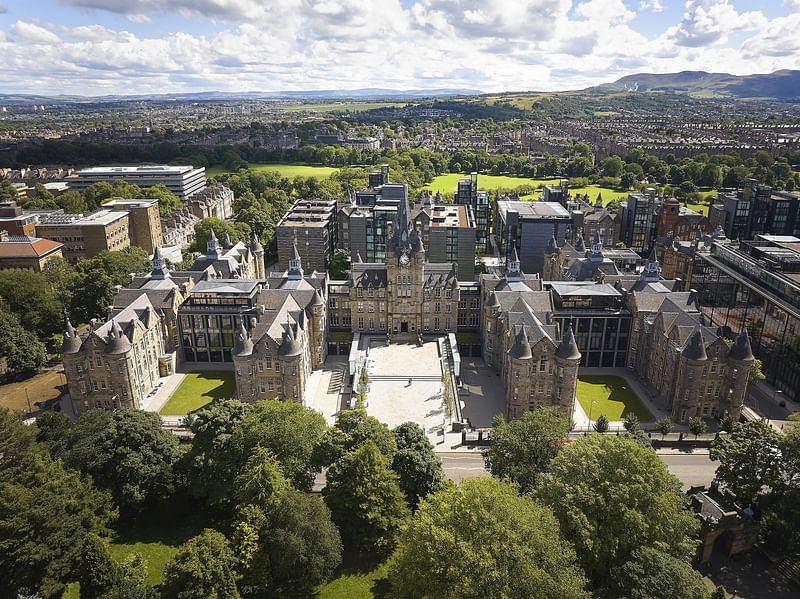
Project description: "Located within a UNESCO World Heritage Site, the University of Edinburgh, which was foun- ded in the 16th century, is one of the world’s oldest and most prestigious universities. The nearby Old Royal Infirmary provided an ambitious option for expansion. And so, a fabulous construction and renovation project saw the light of day. At the helm of this transformation was Bennetts Associates, for a Futures Institute for the 21st century. The refurbishment of the Scots baronial-style hospital, supported by new and colourful additions on a large scale, has considerably shifted the university’s centre of gravity, creating a new identity for one of Edinburgh’s most admired historical buildings. Inside, the old has seamlessly made way for the modern.Thanks to the Futures Institute, a new public space connects the university to the city, unfurling a majestic opening for the benefit of the many."
Bloomberg Center, Johns Hopkins University, Washington, D.C. by Ennead, Rockwell Group, and SmithGroup

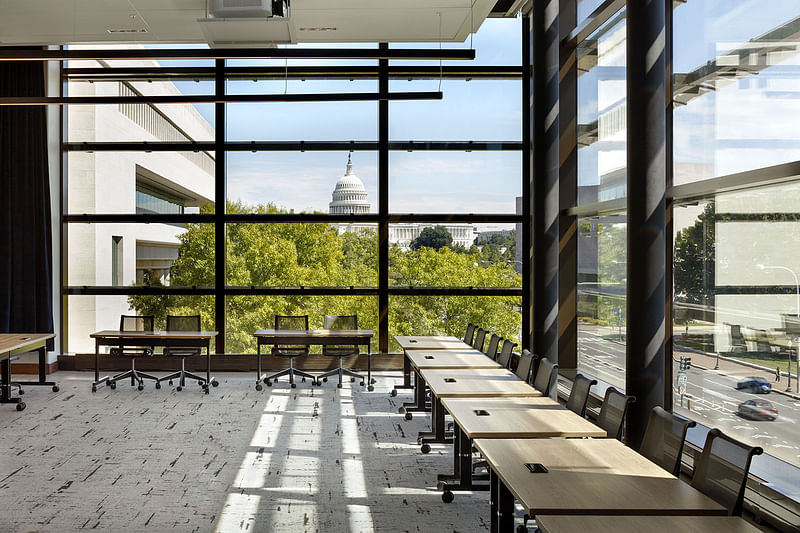
"Founded in Baltimore in 1876, Johns Hopkins was the first American university based on the European model. And now, it has established its Bloomberg Center in the nation’s capital, along Pennsylvania Avenue, in a fully renovated 10-story building.This new learning environment is intended to 'tackle many of the most difficult challenges facing the nation and our world'. In other words, it will deliver intelligence, science and reason at precisely the midway point between the White House and the Capitol. Ennead Architects, which had built the original building, were tasked with meeting the challenge of this ambitious objective. And now, it’s a done deal, with a building that’s essentially new in every way, designed to evoke a 'democratic society'. A large, central atrium contains a variety of seemingly suspended rooms, blurring the boundaries between the spaces and encouraging thoughtful reflection."
Henri Moissan Centre, Paris-Saclay University, Orsay, France by Bernard Tschumi Architects and Groupe-6
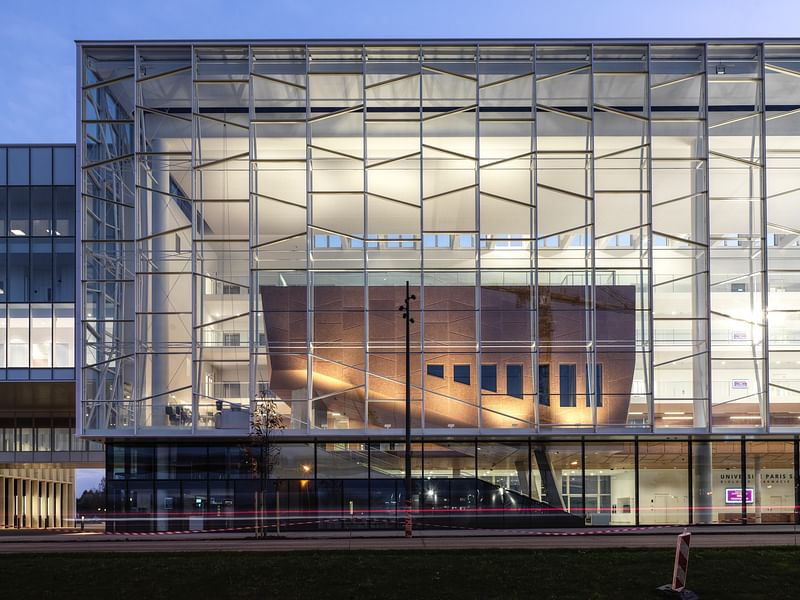
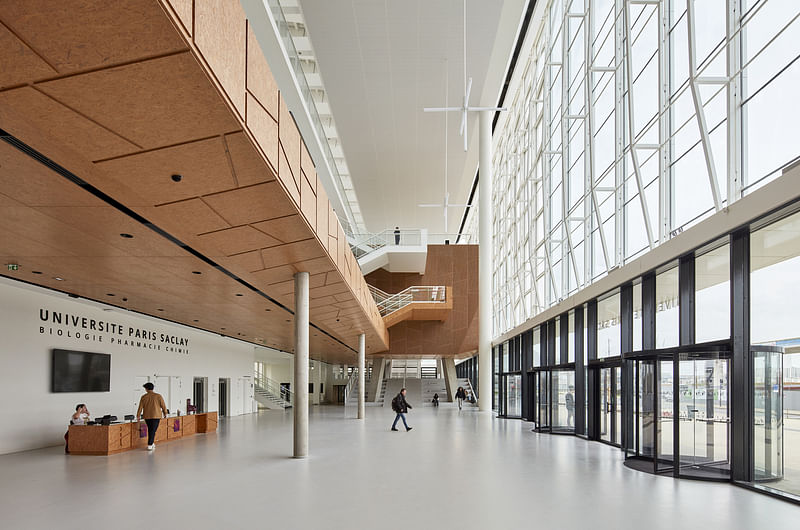
Project description: "Here, far from the bustling city, in the heart of Paris-Saclay, urbanity can be found at the new Henri Moissan Centre, named after the French chemist and pharmacist who won the Nobel Prize in Chemistry in 1906. An internal 'street' extends over nearly a kilometre, with its two branches – Rue de la Recherche and Rue de l’Enseignement (Research Street and Education Street) – connected a series of six buildings that accommodate the different parts of the research and education programme, all of which are interconnected by glass-walled skywalks. In the middle, facing the location of the future train station, a transparent atrium building welcomes students, professors and visitors into a monumental indoor space containing three lecture theatres. Everywhere, the application of wooden panels contrasts with the use of glass, light and white surfaces, and provides a unifying sense of visual warmth. This 74,000 m2 complex designed by Bernard Tschumi and Groupe-6 is one of France’s most extensive university development projects. It has created a space for dialogue between biology, pharmacy and chemistry – all departments which it houses – and transformed them into an ambitious showcase."
John A. Paulson Center, New York University, New York, NY by Davis Brody Bond and KieranTimberlake


Project description: "In Manhattan, an intriguing structure from the minds of Davis Brody Bond and KieranTimberlake establishes a subtle transition between NYU’s existing buildings – the Silver Towers and Washington Square Village – and the varied urban landscape of Greenwich Village. It’s hard to tell everything that is contained behind the flamboyant façade of the John A. Paulson Center. Yet it’s one of the biggest projects undertaken by New York University, complete with sports facilities in the basement, classrooms, many and sundry spaces dedicated to art and the performing arts, 400 housing units on the upper floors, and the list goes on. This functional density is organised around the Commons, a vast, open and lively space that encourages both formal gatherings and informal interactions. This openness is conducive to intellectual discourse, while the outer appearance of the building fosters a 360° relationship with the neighbourhood."
Student Learning and Activity Center, Wenzhou-Kean University, Wenzhou, China by Perkins&Will


Project description: "Founded in 2014, Wenzhou-Kean University is a joint project run by Wenzhou University and Kean University in New Jersey (United States). The new, strategically located Student Learning & Activity Center (SLAC) has become the campus’s central landmark. The building’s mountainous surroundings, its water management and its clear façade that’s in touch with the elements all contribute to the particularly well-lit structure’s harmonious coexistence with nature, which can likewise be found on the site. The design of the 'vertical street' inside the SLAC was also inspired by Wenzhou’s traditional streets, creating an interactive space where students can move about easily between the stories. From the large atrium to the library, by way of various activities rooms, this site designed by Perkins&Will features a clever combination of open, dynamic spaces on the lower levels with quieter locations for collaboration on the upper floors. This tremendous functionality helps to bolster cohesion amongst the student body."

RELATED NEWS Prix Versailles selects the World's Most Beautiful Airports for 2024

RELATED NEWS Seven new projects make the cut for the Prix Versailles' World's Most Beautiful Emporiums List 2024


Share
0 Comments
Comment as :